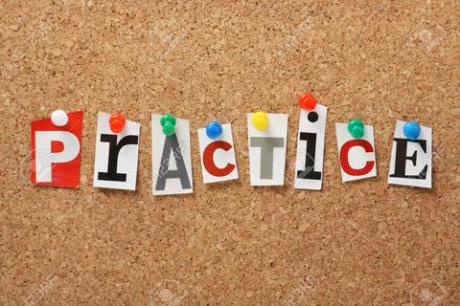 Do you find great new techniques all the time but never actually implement them? Have you decided to try a new idea only to keep discovering more new ideas, strategies and tools before you realise any benefits? If it feels like there are so many new things you learn about however you still don’t make any real improvement in your capability, then maybe you’re experiencing too much theory and not enough practice. This post will give you a tool to get out of that cycle by making execution on your ideas a way of life.
Do you find great new techniques all the time but never actually implement them? Have you decided to try a new idea only to keep discovering more new ideas, strategies and tools before you realise any benefits? If it feels like there are so many new things you learn about however you still don’t make any real improvement in your capability, then maybe you’re experiencing too much theory and not enough practice. This post will give you a tool to get out of that cycle by making execution on your ideas a way of life.
Too much theory, not enough practice
Imagine you have a tendency to read widely to discover all the techniques and strategies out there before committing to trying one. When you finally start, you come across another great technique and want to reconsider your choice and learn more about the new technique.
You could go on learning more and more things, then starting to forget the things you learned earlier. During this time you haven’t made any lasting improvements. You haven’t realised the benefits of any of your learning.
Building a bias towards execution
Instead of learning more and more, and then forgetting while never realising the benefits of the new things you discover, follow these steps when learning something new:
- Read or watch a video or listen to a recording of the new technique
- After one session spent learning, practice what you know
- Don’t allow yourself to progress any further into the theory without having practiced what you know
- Only once you’ve practiced, learn the next step
- Continue to learn and practice alternately building a bias towards execution
When you don’t allow yourself to continue reading chapter after chapter, new technique after new technique, you make execution into a sticking habit. Once execution is a sticking habit that’s ingrained into your learning, you guarantee progress and start making the lasting improvements; actually reaping the rewards from your work.
Why you should build a bias towards execution
Think of the great people you admire for achieving something. These people aren’t admired because they learned about a huge number of possible strategies and tools. They’re admired because they took action on one thing and made a change.
Just look at the vast sea of productivity techniques and strategies, simple and complex, aimed at increasing your effectiveness. Francesco Cirillo probably studied many of these. However most people know him as inventor of the Pomodoro technique – one thing that he discovered and took action on, not the (probably) hundreds of other things he’s learned about.
The other key motivation of course is that the execution, the actions, are what moves you towards your goals. Setting some goals for yourself and then watching the time evaporate as you read and learn more and more without taking action can be frustrating. Building action as a habit into your learning avoids this by ensuring you’re always taking consistent action.
Making learning stick
We retain more when we use all of our senses to actively learn something. For example visualising, drawing a diagram, comparing something new against some previous knowledge, even associating something with a smell or touch.
Building action into your learning as a habit will make it much more likely that you retain what you’ve learned.
Have you been in a situation where you felt you’ve repeated the same mistake more than once or twice? Pick out the learning from the mistake, find the solution but don’t leave it at that. Practice the solution. Actually implement it even if it’s not applicable right at that moment. Taking action in this way will make the learning stick.
In summary
Actions are what makes you progress in life, not learning about new technique after new technique with no action.
Consistently executing the right actions makes it much more likely that you achieve what you set out to do rather than losing motivation after a few days.
You can achieve this consistency by making practice into a built in habit triggered whenever you’re learning something new.
How do you balance learning with execution?